how Kill Tony became the last honest show in America
Kill Tony and the resurrection of merit
There's a philosophical question hiding in a dimly lit Austin comedy club: What happens when you strip away all the social scaffolding and let pure performance decide who belongs? The answer arrives every Monday night in the form of Kill Tony—Tony Hinchcliffe's weekly gladiatorial comedy show that has accidentally become one of the most important cultural experiments of our time.
On the surface, it looks like a cultural landmine. Strangers line up for the chance to be humiliated—that's literally the deal. Sixty seconds to make a room full of people laugh, followed by an unfiltered roast from comics who don't believe in safe spaces, trigger warnings, or punching in any particular direction. It's loud, reckless, and full of the kinds of jokes that get you exiled from polite society. Racist, sexist, homophobic, transphobic—you could make a list, and someone on Reddit probably has.
Yet somehow, Kill Tony has become one of the most genuinely diverse, meritocratic, and radically inclusive stages in comedy—not through quotas or curated lineups, but through a ruthless commitment to an old idea: that laughter doesn't lie.
the philosophy of the bucket—
At its core, Kill Tony operates on what philosophers might recognize as a "veil of ignorance" experiment. John Rawls theorized that the most just society would be designed by people who don't know their position in it—their race, class, abilities, or advantages. The bucket achieves this accidentally but perfectly.
When comedians drop their names into that literal bucket, they're entering a space where Tony doesn't know your story, your identity, or your politics when he draws your name. The audience doesn't either. You have sixty seconds to justify your existence on that stage, and the only currency that matters is whether you can make strangers laugh.
This creates something profound: a space where merit isn't just proclaimed but actively tested, repeatedly, in real time. It's equal opportunity mockery, and that's the magic. Nobody is spared, which means nobody is tokenized. Martin Phillips—who has muscular dystrophy—is a regular, not because anyone feels bad for him, but because he's funny. Fiona Cauley rolls onstage in her wheelchair and gets roasted like everyone else—and laughs, because she knows she's with her people.
What makes this philosophically interesting is how it inverts our contemporary understanding of inclusion. Rather than engineering diversity through conscious selection, Kill Tony achieves it through conscious randomness. The result is a stage that often looks more genuinely diverse than carefully curated showcases, not because someone decided it should be, but because talent is distributed more broadly than our institutional assumptions suggest.
the making of an anti-hero—
Tony Hinchcliffe didn't arrive at this philosophy through academic study—he was forged by necessity. Born and raised in Youngstown, Ohio, he came up the hard way: scrappy, sharp, and built like a guy who's been insulted enough times that turning the blade around became second nature. He wasn't handed a stage; he had to claw his way onto one.
When he moved to L.A. and worked the door at The Comedy Store in the mid-2000s, he was witnessing the tail end of comedy's wild west period. That's where he learned to watch, listen, study. Most comics come up chasing laughs, but Tony chased blood. His heroes weren't the crowd-pleasers—they were the assassins: Don Rickles, Greg Giraldo, Patrice O'Neal. People who understood that comedy's highest function isn't to comfort, but to reveal truth through precision strikes.
This lineage matters. Tony represents a direct evolution from the court jester tradition—the designated truth-teller who could mock kings and peasants alike because someone had to. But unlike classical court jesters who served power, Tony serves chaos. His loyalty isn't to any particular hierarchy; it's to the joke itself, wherever it leads.
By the late 2010s, he had the industry credentials—writing for Comedy Central Roasts, regular appearances on The Joe Rogan Experience—but not the platform. Tony was too much for the sanitized version of comedy that had become popular, the kind that's afraid to offend and desperate to affirm. So he built his own arena.
Kill Tony launched in 2013 as a small weekly show in The Comedy Store’s Belly Room—bare-bones format, random comics from the crowd, zero polish. But it had teeth. And more importantly, it had philosophical coherence: a genuine commitment to the idea that comedy should be a meritocracy, not a managed experience.
the carnivalesque tradition—
Kill Tony belongs to a long tradition of carnivalesque spaces—temporary zones where normal social hierarchies are suspended and everyone becomes fair game for mockery. Medieval carnivals allowed peasants to mock kings, jesters to speak truth to power, and social boundaries to dissolve in service of communal catharsis.
Comedy has always served this pressure-valve function in human societies. Lenny Bruce's nightclub performances in the 1960s didn't just push boundaries—they revealed the arbitrary nature of those boundaries. Richard Pryor's comedy clubs became spaces where racial tensions could be processed through laughter rather than violence. Early Saturday Night Live created a television carnival where political figures could be ritually humiliated regardless of party affiliation.
But Kill Tony represents an evolution of this tradition. Where previous generations of boundary-pushing comedy still operated within industry gatekeeping structures, Kill Tony has systematized chaos into a repeatable format that anyone can access. The Comedy Store's original anarchic energy—when it served as a proving ground for Pryor, Robin Williams, and Sam Kinison—has been democratized.
The historical parallel that most closely matches Kill Tony might be the ancient Greek concept of parrhesia—fearless speech, the obligation to speak truth regardless of consequences. But unlike classical parrhesia, which was typically the privilege of citizens speaking to power, Kill Tony democratizes fearless speech. Anyone can speak truth, and everyone—including the host—is subject to it.
the gauntlet—
Most comedy shows are curated performances—booked, polished, approved by someone with a clipboard. The audience claps in all the right places. It's theater with a laugh track.
Kill Tony strips all that away. It's a gauntlet where comedians—real ones, fake ones, first-timers, legends—put their name in a bucket. If Tony draws you, you get 60 seconds. No warm-up. No introduction. No safety net. One minute, live, in front of a crowd that doesn't care how hard you tried—they only care if you're funny.
And if you bomb, you don't just walk offstage. You sit in it. Tony and the panel roast you, riff off your set, poke into your past, and pull out every insecurity you didn't know was visible. It sounds cruel, and sometimes it is. But this is the paradox: Kill Tony looks offensive while being one of the only shows that doesn't infantilize anyone.
If you crush hard enough, you might get handed a Golden Ticket—a literal invitation to return anytime. Not booked. Not scheduled. Just walk on stage and go. It's the show's highest honor, earned only through absolute destruction of the room.
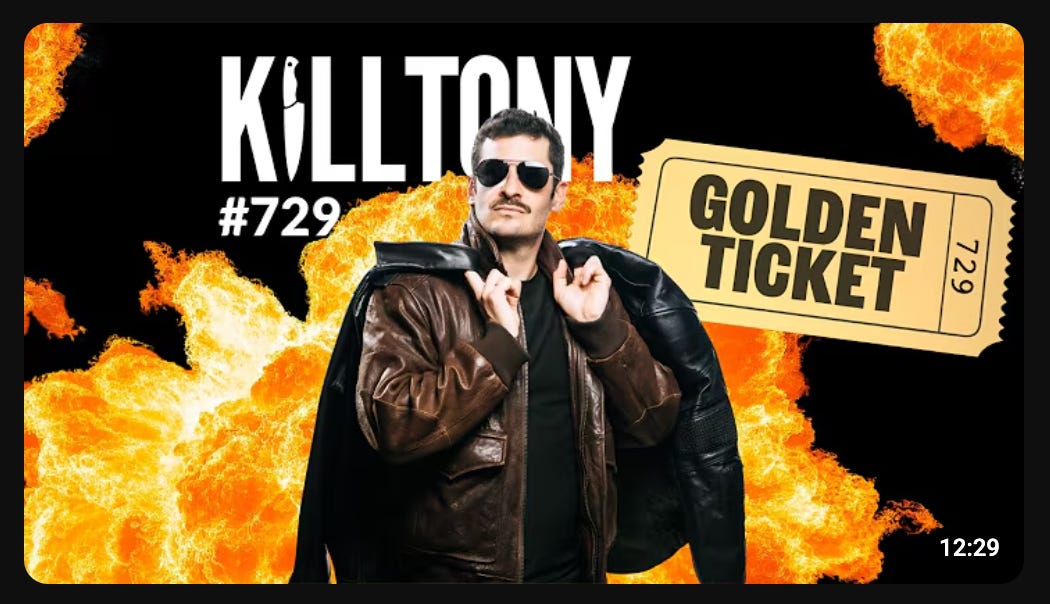
the involuntary truth of laughter—
Laughter presents a unique epistemological problem: it's one of the few human responses that's genuinely difficult to fake convincingly. You can applaud politely, nod approvingly, signal virtue through your reactions—but authentic laughter bypasses conscious control. It's a bodily response emerging from cognitive surprise and social bonding mechanisms that operate below deliberate thought.
This is why Kill Tony functions as a merit detection system. Unlike other artistic forms that can be evaluated through theoretical frameworks or cultural context, comedy success is binary and immediate. Either the room laughs or it doesn't. There's no committee that can retroactively decide a joke was actually funny despite the audience's reaction.
In a world addicted to curation and moral posturing, Kill Tony operates as a chaos engine running on the oldest currency we have: genuine laughter. Not clapter, not approval, not affirmation—just the pure, involuntary reaction that happens when something is actually funny.
The show's commitment to this binary feedback creates what we might call "epistemic honesty"—a direct relationship between performance and result that's increasingly rare in contemporary culture. Most creative industries now operate through multiple layers of mediation: critics, algorithms, demographic targeting, focus groups. Kill Tony strips all that away and creates a direct circuit between performer and audience response.
cancel culture vs. kill culture—
This philosophical commitment was tested by fire in 2021, when a clip surfaced of Tony making a racist joke about an Asian comic. The internet did what it does—frothing outrage, selective context, the usual calls to cancel. Sponsors backed off. He was dropped by his agency. Venues pulled dates.
Most comics, when this happens, go through the same arc: post the Notes app apology, do a podcast tour about their growth, maybe cry on camera. Tony didn't do any of that. He went quiet—not because he was ashamed, but because he refused to play the game.
He moved to Austin. The show found a new home and doubled down on the format. Bigger crowds, higher stakes, better comics. People kept watching, kept lining up—not because they wanted "problematic" content, but because they were starved for something real.
Then came the moment that changed everything: October 2024, Madison Square Garden, a Trump rally. Tony stepped to the mic and joked that Puerto Rico was "a floating island of garbage." The backlash was swift and severe—politicians condemned him, Latino groups called for boycotts, journalists wrote think pieces. The script was familiar.
Again, no apology. No walk-back. No performative re-education tour. And again, the show grew.
This was the inflection point where Kill Tony entered mainstream consciousness. The Trump rally joke became a cultural Rorschach test: some saw it as proof of comedy's toxicity, others as evidence of its essential honesty. But everyone was talking about it. The controversy served as an inadvertent marketing campaign for a show that had been building this audience organically for over a decade.
Tony didn't fold because he understood something most entertainers forget: you don't owe the mob your dignity. You don't owe performative remorse to people who were never going to forgive you anyway. And crucially, you don't apologize for telling jokes—that's the death of comedy.
Cancel culture operates on fragility and optics. Kill culture operates on risk, resilience, and truth. One seeks control; the other seeks catharsis.
But this isn't just a comedy industry dispute—it's a collision between fundamentally different theories of justice. Progressive institutionalism believes fair outcomes require conscious intervention, that historical inequities demand active correction through managed inclusion. Libertarian meritocracy believes removing artificial constraints allows natural talent to emerge, that conscious selection introduces more bias than it removes. The Trump rally moment crystallized these tensions because it forced people to choose: Do we want systems that feel fair or systems that produce fair outcomes? Kill Tony's audience chose procedural fairness—the same rules for everyone—over distributive justice.
What makes this culturally significant is that Kill Tony accidentally became a testing ground for competing visions of equity. Its explosive growth suggests substantial appetite for "chaotic fairness"—systems that feel genuinely random and merit-based, even if they don't guarantee proportional representation. This preference exposes something profound: we seem to hunger for authentic judgment more than protective accommodation.
The market spoke with its wallets and viewership. What started as grassroots rebellion against institutional gatekeeping had become undeniable cultural force. The very platforms that had initially rejected Tony's approach were now scrambling to capitalize on what he'd built.
In April 2025, that momentum culminated in a full-circle moment. Netflix—yes, the same platform that leans heavily into safe, curated comedy—greenlit a Kill Tony special titled Kill or Be Killed, with Shane Gillis dropping a full Trump, Adam Ray doing Biden, and the Austin circus on full blast. The industry couldn’t ignore it anymore.
Tony didn't get canceled. He got forged.
the new meritocracy—
The most compelling aspect of the Kill Tony experiment is what it reveals about the relationship between intention and outcome in diversity efforts. Contemporary institutions spend enormous resources trying to engineer inclusive outcomes through careful selection processes, demographic quotas, and representation frameworks. These efforts are well-intentioned but often produce environments that feel artificial to participants.
Kill Tony achieves genuine diversity through the opposite approach: systematic indifference to demographic categories. There's no DEI framework. No committees, no quotas, no identity-based guarantees. Everyone is thrown into the same bucket, literally. The draw is random, the judgment immediate, and the only criterion is: did you make the room laugh?
It doesn't matter if you're gay, trans, disabled, fresh out of rehab, or wearing a MAGA hat. If you crush, you get asked back. That's it.
This randomness—the total absence of engineered inclusion—makes it feel more fair than systems designed to be "equitable." Nobody gets a head start. Nobody gets protected. You either kill, or you don't.
That’s why people like Martin Phillips and Fiona Cauley matter so much on this stage. They’re not symbols, and they’re not there to make the show look progressive. They’re there because they’re comics.
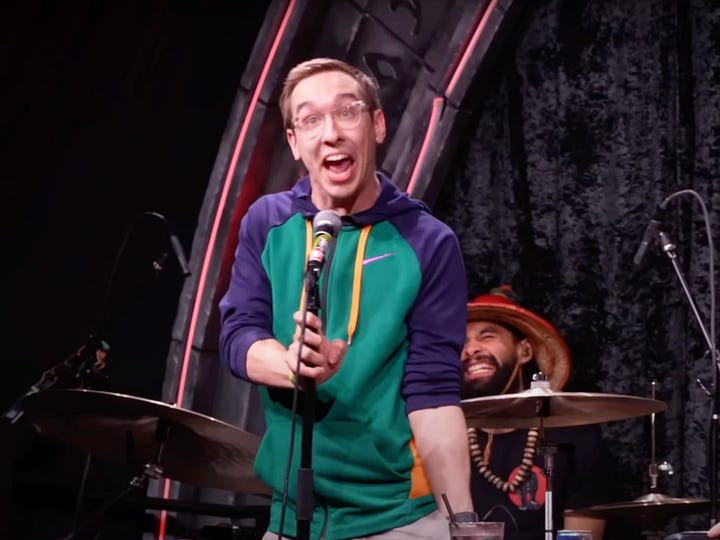
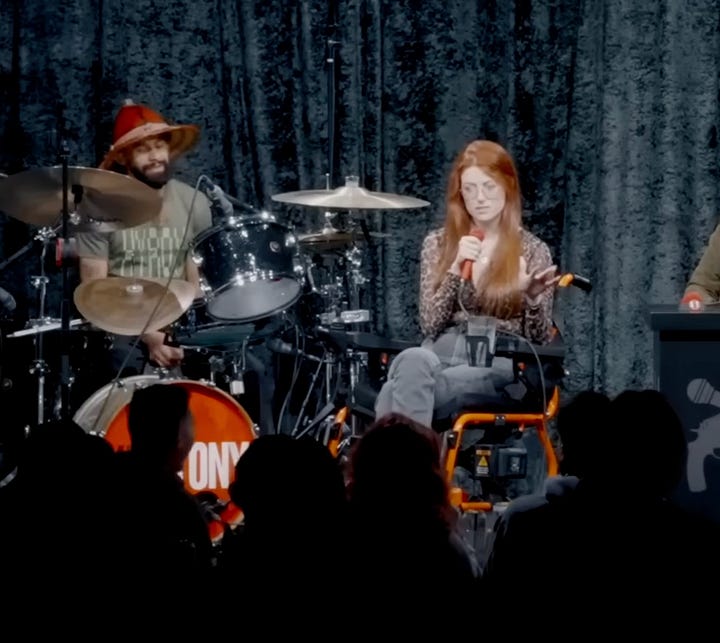
The panel doesn't care about your story unless it's funny. The crowd doesn't care about your labels unless you do something with them. Tony rewards performance, not identity.
You'll never hear the word "representation" on this show. But examine the lineup on any given week, and you'll see more actual diversity—of background, belief, ability—than most Netflix showcases. Not because it was selected, but because it happened naturally. Merit sorted it out.
The randomness also exposes how much unconscious bias exists in traditional gatekeeping systems. Comedy club bookers, talent agents, and entertainment executives operate with implicit assumptions about who will succeed. The bucket circumvents all of that and regularly elevates performers who would never have made it through conventional selection processes.
The tragic irony of contemporary diversity efforts is that they often achieve the opposite of their stated goals—creating resentment, imposing artificial ceilings on merit, and reducing complex human beings to demographic categories. Kill Tony proves that when you stop managing for optics and start selecting for talent, you get both better outcomes AND more authentic inclusion.
And that’s what people are responding to. Not just the jokes, but the truth underneath them: that comedy, at its core, is one of the last places where the best idea wins.

Kill Tony as a cultural barometer—
Perhaps the most significant thing Kill Tony reveals is the gap between public discourse about comedy and what audiences actually find funny. The show's explosive growth suggests significant portions of the comedy-consuming public are hungry for material that feels genuinely risky, even if it occasionally crosses lines that institutional comedy has decided are uncrossable.
You can learn a lot about a culture by what it laughs at—and what it refuses to laugh at. Kill Tony functions as a cultural barometer, detecting tensions and anxieties that more carefully managed entertainment forms miss or avoid. When a joke lands with a Kill Tony audience, it's revealing something about collective psychology that focus groups and social media metrics don't capture.
The show tells you what people are done with: curated lineups, identity pandering, the illusion of risk. And it shows you what they still crave: real danger, real pressure, the chance to watch someone step into the fire and survive.
It treats everyone like adults. Some bomb. Some surprise you. Some become stars. But the process proves something bigger: people can handle discomfort. They don't want everything softened. They don't want meaning assigned based on boxes checked. They want to earn it.
What makes Kill Tony culturally significant isn't that it's offensive or anti-woke—though it can be both. What makes it significant is that it's created a genuinely alternative system for evaluating and developing talent, operating by different rules than dominant cultural institutions.
Kill Tony isn't hate speech—it's roast culture. Mean, yes. Offensive, definitely. But always in service of the joke. There's no real malice behind it. What makes it work is the shared understanding that everyone's getting hit. The fat guy. The hot girl. The stoner. The immigrant. The disabled comic. The host. Nobody is sacred, which is why the whole thing feels freeing.
The show offends people. Good. That means it's alive.
Comedy isn't supposed to be safe—it's supposed to be human. Awkward, risky, sometimes offensive, always honest. In an era when most creative spaces have become increasingly managed and risk-averse, Kill Tony offers something genuinely wild and unpredictable.
The show's success suggests significant unmet demand for creative environments that prioritize authenticity over safety, merit over message, individual achievement over group representation. Not because people oppose diversity or inclusion, but because they want those outcomes to emerge organically from genuine opportunity rather than institutional engineering.
Kill Tony is a weekly reminder that belonging doesn't come from being seen—it comes from being good. Not because someone made space for you or handled you with care, but because you got up, did your minute, and earned it.
The real question isn't whether the Kill Tony approach could work elsewhere—it's whether we have the courage to abandon systems that prioritize feelings over performance and representation over results. Because what the show proves, week after week, is that people don't need to be "included" if they're just given a real shot.
Our challenge, then: Preserve spaces for genuine risk and authentic expression in an increasingly managed world.
Check it out live on YouTube every Monday night—if you can handle it :)
Instagram: @tonyhinchcliffe
Wikipedia: Tony Hinchcliffe
IMDb: Tony Hinchcliffe
XO, STEPF



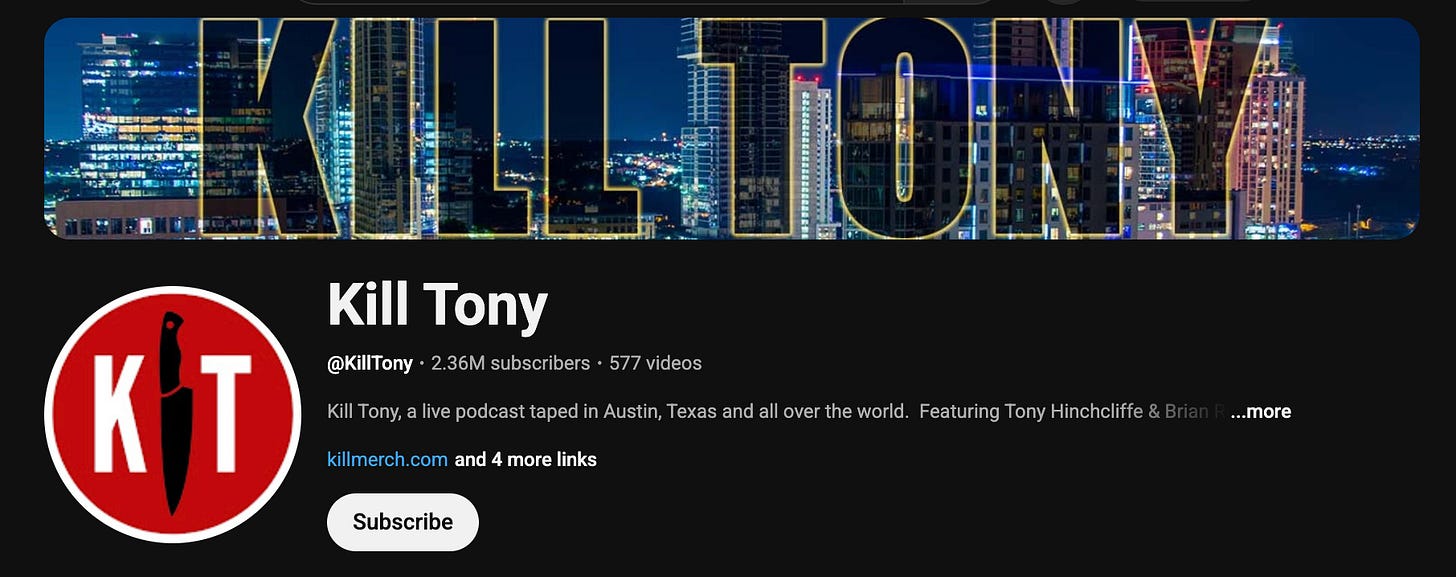
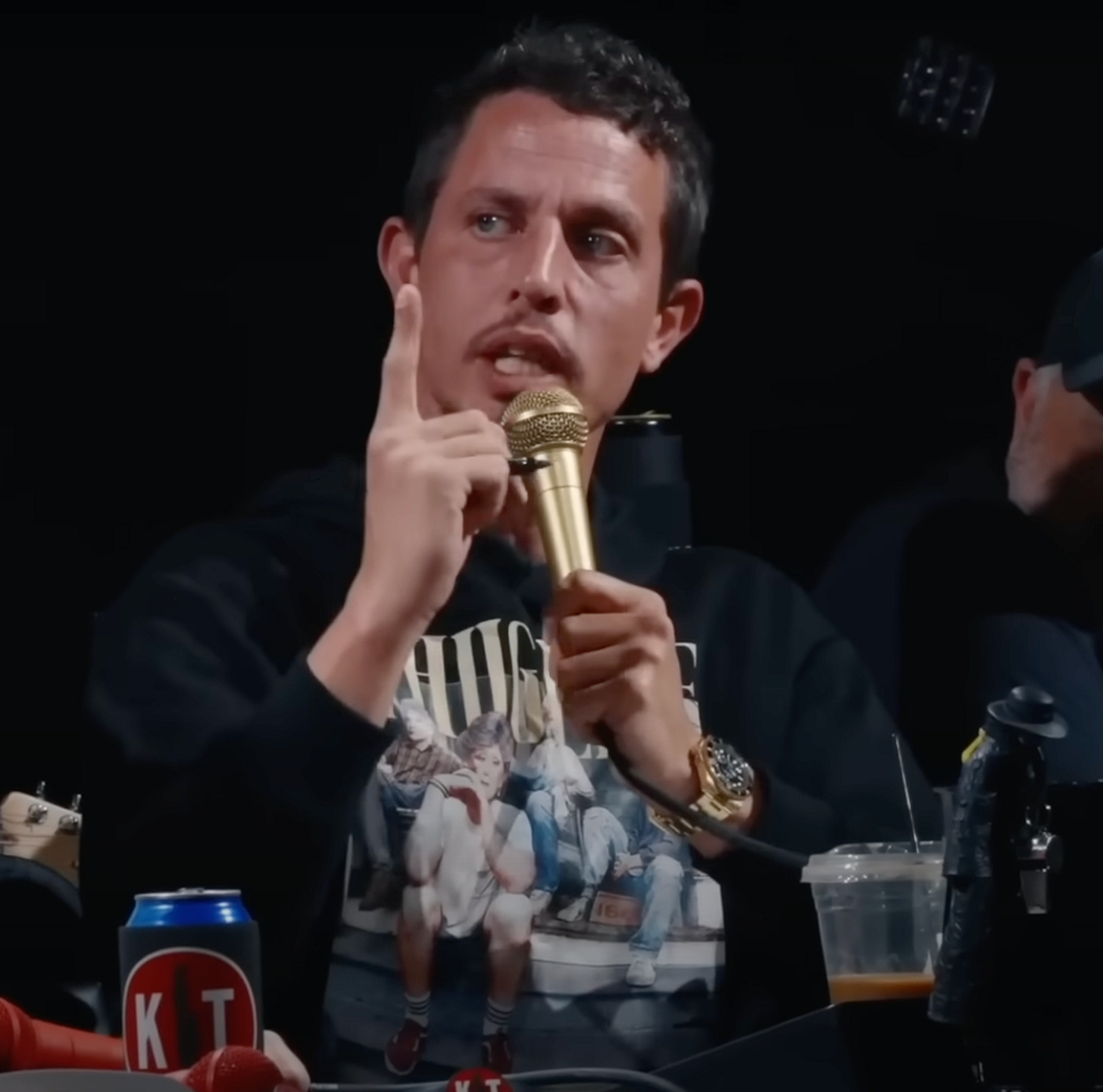


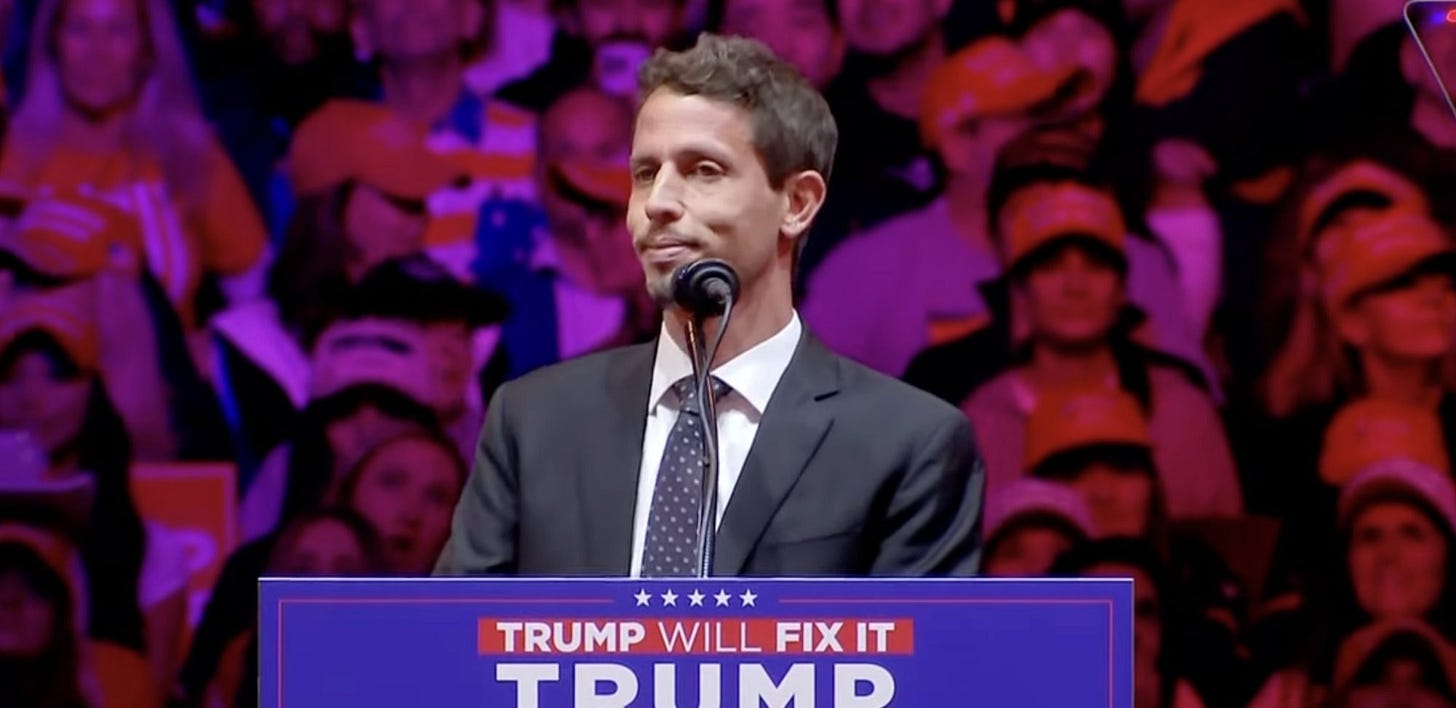

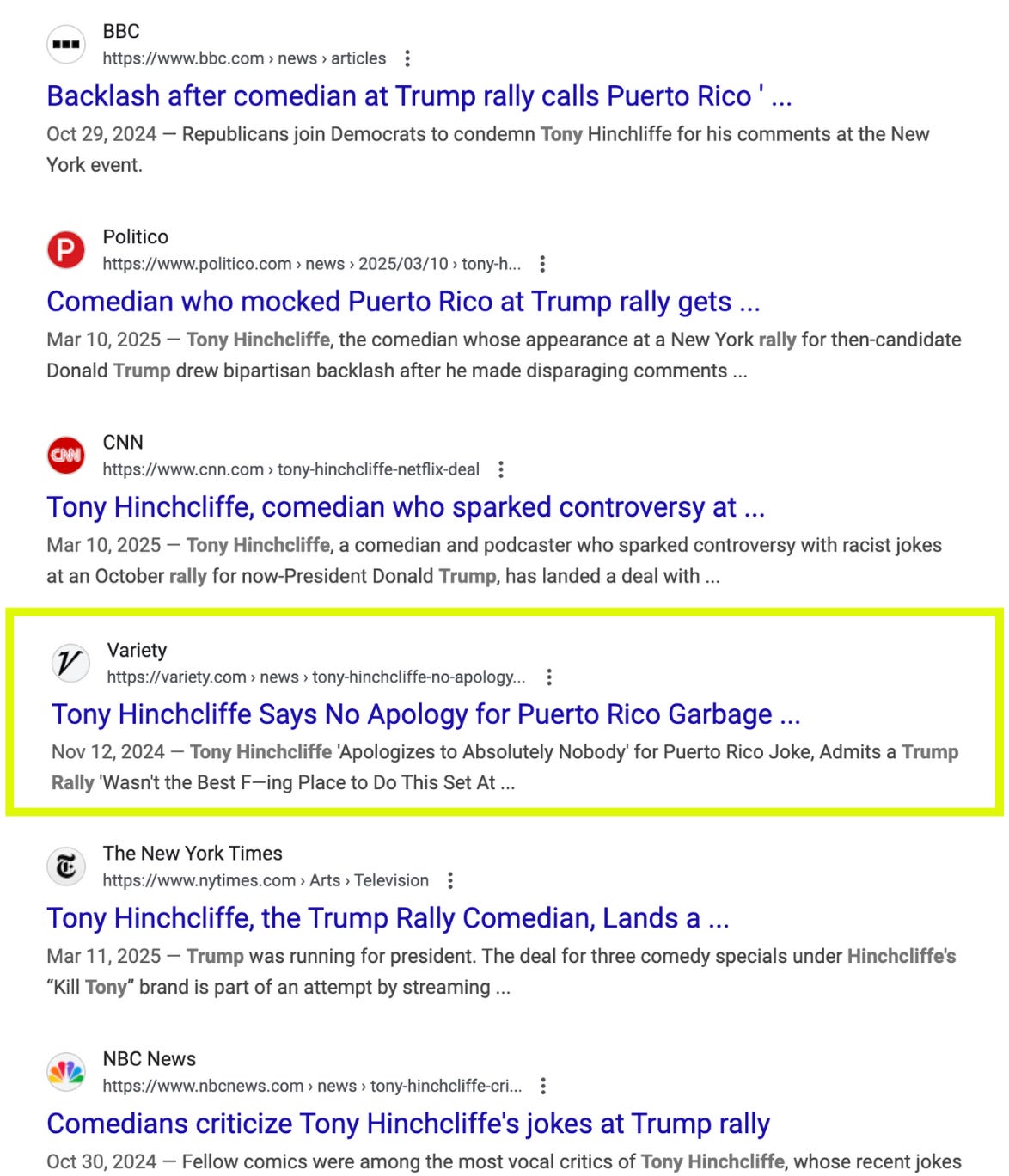

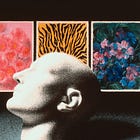



It took me a while to grow into Kill Tony. At first, I felt quite disgusted from the jokes and the humiliation. But with time I realized exactly what you said: they treat people like adults.
They’re not bullying the stranger in the street. People literally sign up to be there!! And the anticipation to discover if someone is funny or not is the best 😂😂
Tony's the man. There's a reason it's grown into the number one live comedy show in the world. Turns out people love meritocracy because that gets the best quality talent